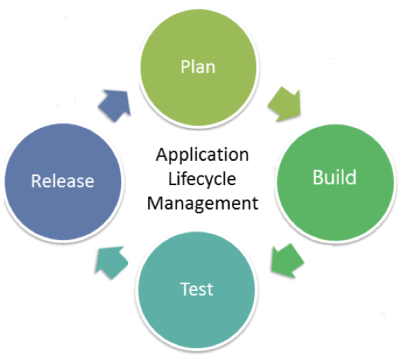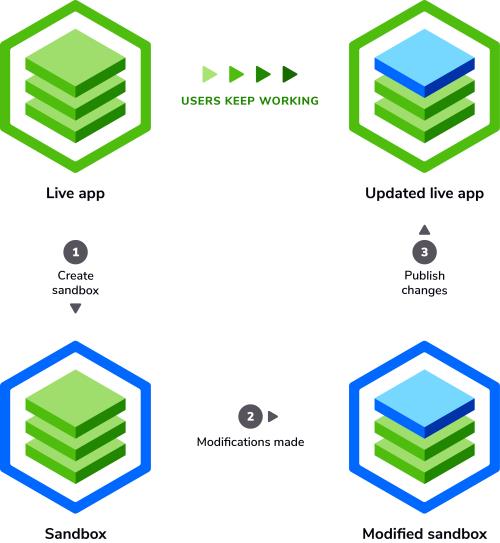Quickbase sandbox
You can use a Quickbase sandbox as part of your organization’s application lifecycle management (ALM) strategy to collaborate, plan, build, test, and release Quickbase apps.
Note: This feature is available for specific plans. Check the Quickbase Pricing page for a comparison.
ALM and Quickbase
ALM is the continuous process of managing the life of an app. A Quickbase app’s lifecycle begins with its planning and creation, proceeds to building and testing, and ends with its release for general use.

ALM contains three areas:
-
Governance: Ensures that the app always meets the organization’s needs, while considering the app’s benefits and costs throughout its lifecycle
-
Development: Iterative process of creating the app and includes defining requirements, designing, developing, testing, and deploying
-
Operations: Work required to run, manage, and monitor the deployed app
What is a sandbox?
Quickbase supports ALM by allowing app builders to enable a safe development environment, separate from but contained within an app, in which changes can be built, tested, and reviewed, before those changes are published to all users. Within Quickbase this environment is called a sandbox. Changes and development work in a sandbox can be done while users continue to use the live app. The live app remains running and unaffected by changes being developed and tested in a sandbox until those changes are published.
As you implement and test changes in the sandbox, Quickbase keeps track of the changes that have been made. As you work, you can review, publish, or discard the changes.
This diagram illustrates the process:

Tracked changes include those made to the schema of the app. The schema are all the non-data elements of your app. Here are examples of things that make up a schema:
-
Tables and fields
-
Properties or settings for the app, tables, or fields
-
Home pages, code pages, and rich text pages
-
Forms
-
Notifications
-
Widgets, buttons, links, and similar elements
-
Common (shared) reports
-
Role creation and properties
-
Custom data rules for tables
There are some things you can do in a sandbox that won’t be tracked as changes. If you need these changes to be available, you would continue to make these updates in the live app:
-
Adding, deleting, or modifying data in records
-
Assigning user and group roles and permissions
-
Personal reports
-
Actions and webhooks
